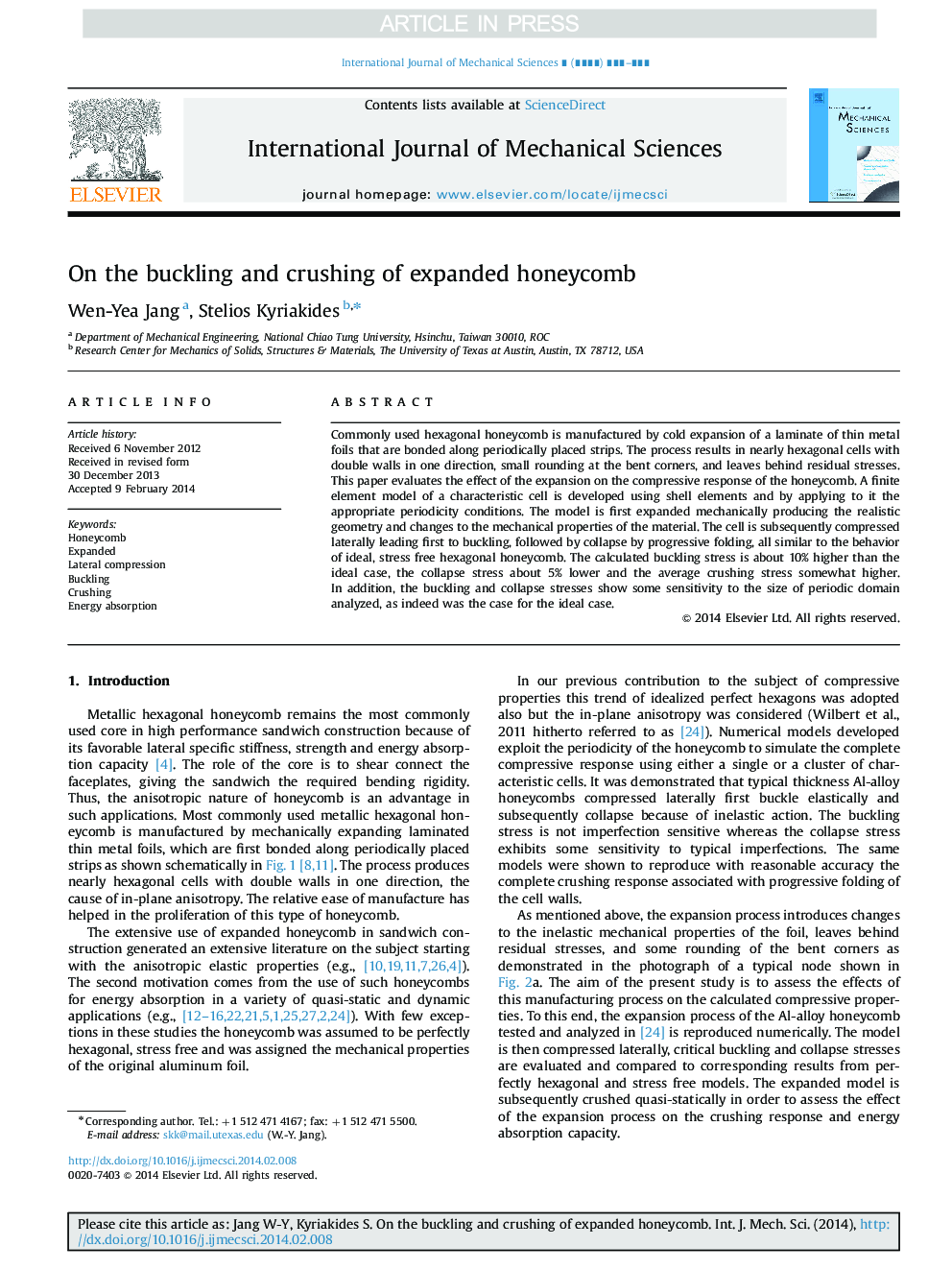| Article ID | Journal | Published Year | Pages | File Type |
|---|---|---|---|---|
| 7174268 | International Journal of Mechanical Sciences | 2015 | 10 Pages |
Abstract
Commonly used hexagonal honeycomb is manufactured by cold expansion of a laminate of thin metal foils that are bonded along periodically placed strips. The process results in nearly hexagonal cells with double walls in one direction, small rounding at the bent corners, and leaves behind residual stresses. This paper evaluates the effect of the expansion on the compressive response of the honeycomb. A finite element model of a characteristic cell is developed using shell elements and by applying to it the appropriate periodicity conditions. The model is first expanded mechanically producing the realistic geometry and changes to the mechanical properties of the material. The cell is subsequently compressed laterally leading first to buckling, followed by collapse by progressive folding, all similar to the behavior of ideal, stress free hexagonal honeycomb. The calculated buckling stress is about 10% higher than the ideal case, the collapse stress about 5% lower and the average crushing stress somewhat higher. In addition, the buckling and collapse stresses show some sensitivity to the size of periodic domain analyzed, as indeed was the case for the ideal case.
Related Topics
Physical Sciences and Engineering
Engineering
Mechanical Engineering
Authors
Wen-Yea Jang, Stelios Kyriakides,
